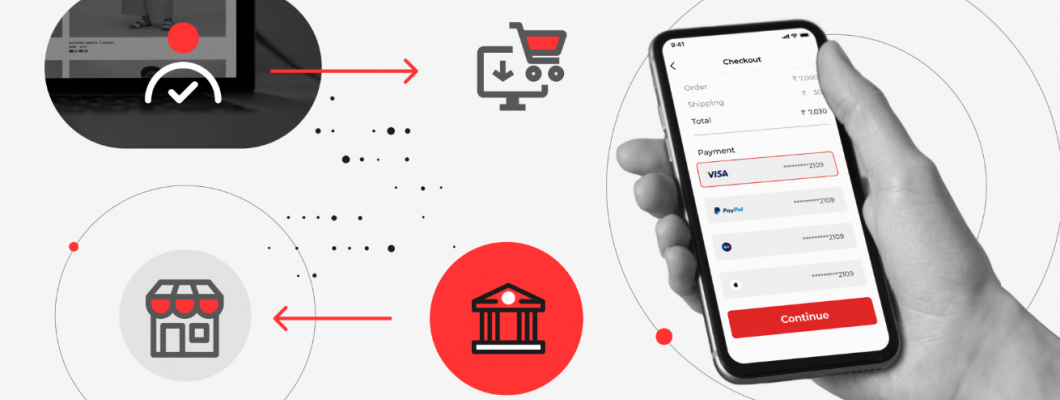
In today’s fast-moving digital world, providing a smooth and secure checkout process is vital for any online business. Whether you’re managing an e-commerce site, a subscription platform, or a mobile app, the way you handle transactions directly impacts user trust and conversion rates. A well-integrated payment gateway ensures that your customers can complete purchases quickly, safely, and without unnecessary friction.
Payment gateway integration is more than just accepting credit cards; it’s about creating a seamless transaction flow that supports multiple payment methods, encrypts sensitive data, and complies with security standards like PCI DSS. It’s also key to reducing cart abandonment and boosting customer satisfaction.
This blog will break down the essentials of payment gateway integration: what it is, why it matters, and how to implement it effectively. From choosing the right provider to ensuring compliance and offering a frictionless user experience, we’ll cover the critical steps to help you build trust and streamline payments, ultimately driving more revenue for your business.
What is a Payment Gateway?
A payment gateway is a technology that captures and transfers payment data from the customer to the acquiring bank. It acts as a bridge between your website/app and the financial institutions involved in the transaction process.
It ensures that:
Payments are encrypted and secure
Transactions are authorized and validated
Funds are transferred correctly from the buyer to the seller
Examples of popular payment gateways include:
Stripe
PayPal
Razorpay
Square
Authorize.Net
Braintree
Why Payment Gateway Integration Matters
A good payment experience can make or break a sale. Here’s why integrating the right payment gateway is essential:
1. Security Compliance
Your checkout system must be PCI DSS compliant to protect sensitive cardholder data. Payment gateways are designed with advanced encryption and tokenization to ensure compliance and security.
2. Seamless User Experience
A complicated or slow checkout process leads to abandoned carts. Integrated gateways offer faster checkouts, saved card details, and mobile-friendly interfaces, reducing friction and improving conversions.
3. Multiple Payment Methods
Today’s customers expect flexibility. Integration allows you to accept:
Credit/debit cards
UPI and mobile wallets
Net banking
Buy-now-pay-later (BNPL) services
4. Global Transactions
If you sell internationally, payment gateways can support multi-currency payments and localized options, ensuring a smooth experience for global buyers.
Key Features to Look For
When choosing and integrating a payment gateway, consider these essential features:
Fraud detection & prevention tools
Recurring billing capabilities for subscriptions
Easy refund & dispute management
Real-time reporting & analytics
Customizable checkout UI/UX
Mobile SDK support for apps
Developer-friendly APIs & documentation
Steps to Integrate a Payment Gateway
Here’s a basic roadmap to integrating a payment gateway into your website or app:
Step 1: Choose the Right Gateway
Evaluate based on:
Supported countries/currencies
Transaction fees and pricing
Integration complexity
Customer support
Reputation and reviews
Step 2: Set Up a Merchant Account
Some gateways require a separate merchant account to process funds. Others (like Stripe and PayPal) provide an all-in-one solution.
Step 3: Get API Keys or SDK
Once your account is approved, the gateway will provide:
API keys (for web-based integration)
Mobile SDKs (for Android/iOS apps)
Step 4: Integrate with Backend & Frontend
Your developers will need to:
Add payment form UI (frontend)
Call gateway APIs to process transactions (backend)
Handle errors, payment success/failure, and store transaction data
Step 5: Ensure Security & Compliance
Implement:
SSL certificates
Data encryption
Tokenization
PCI DSS compliance measures
Step 6: Test in Sandbox Mode
Before going live, test all possible scenarios:
Successful payments
Failed transactions
Refunds
Recurring billing
Step 7: Go Live & Monitor
Switch to live mode and monitor:
Payment success rate
Drop-off points in checkout
Customer feedback
Common Challenges (and Solutions)
Challenge: High Cart Abandonment
Solution: Enable guest checkout, auto-fill options, and fewer form fields.
Challenge: Security Concerns
Solution: Use a PCI-compliant payment gateway with fraud protection features.
Challenge: Integration Complexity
Solution: Choose gateways with plug-and-play plugins for platforms like Shopify, WooCommerce, or Wix.
Best Practices for a Seamless Checkout
Keep the checkout process short and intuitive
Offer multiple payment methods
Display trust badges and SSL certificates
Provide a visible support/contact option
Allow users to save cards securely for future payments
Use responsive design for mobile users
Conclusion
A secure and seamless payment gateway integration is not just a technical requirement it’s a strategic investment in your customer experience. The right integration can build trust, reduce cart abandonment, and boost your overall revenue.
Whether you're starting a new venture or optimizing an existing one, prioritizing your checkout experience is key. Choose a reliable gateway, integrate it properly, and keep testing and refining the process.

Leave a Comment